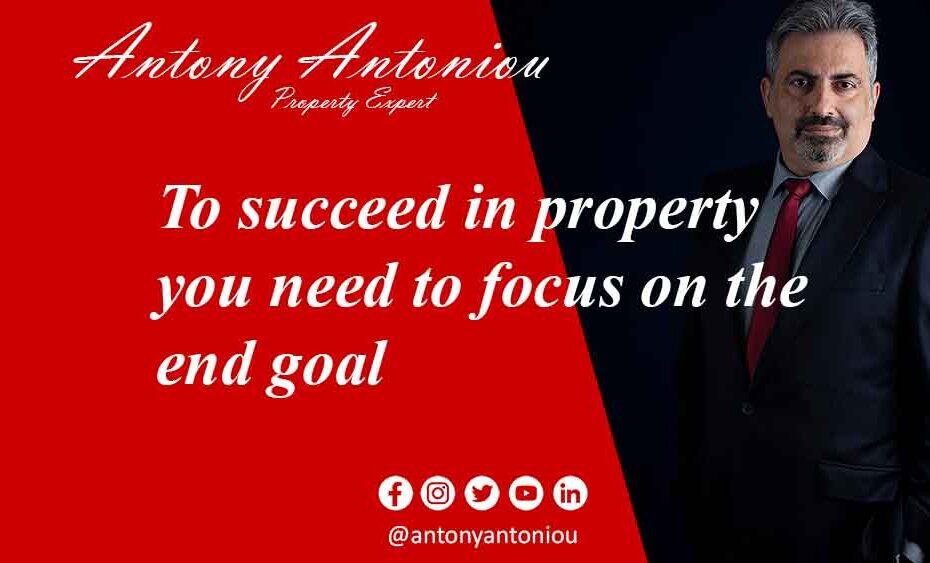To succeed in property you need to focus on the end goal
Price drops and negative equity aren’t necessarily fatal to your ambitions
Introduction: The Perils of Property Predictions
In the turbulent world of real estate, rumors about falling house prices and the looming specter of negative equity can send even the most seasoned property investor into a tailspin. However, to succeed in property, it’s crucial to filter out the noise and focus on the bigger picture. This article explores why you should remain steadfast in your property ambitions, even when the market appears to be against you.
The Daily Deluge: Noise About Falling Prices
Every day, self-proclaimed property experts take to the airwaves and the internet to make predictions about the housing market’s future. They brandish their crystal balls and proclaim doom and gloom, leaving property owners and prospective buyers in a state of anxiety. This relentless barrage of negative predictions becomes especially unsettling when combined with rising interest rates and economic uncertainties.
The Perils of Panic: Recent Buyers Beware
For those who have recently taken the plunge into property ownership, these dire forecasts can be downright panic-inducing. The fear of losing hard-earned money looms large, and the prospect of negative market sentiment can cast a dark shadow over the joy of homeownership. In such times, it’s essential to keep a level head and avoid making hasty decisions driven by fear.
A Market in Flux: Buying and Selling Anxiety
Even for those considering entering the property market or selling their existing properties, the current climate can be unsettling. Questions abound: Will house prices continue their downward trajectory? Could you find yourself in negative equity before the year is out? The uncertainty can be paralyzing.
The Unpredictable Market: Nobody Has All the Answers
The simple truth is that no one possesses a foolproof crystal ball when it comes to predicting property market fluctuations. Historical data reveals that house prices have always followed a cyclical pattern. They rise, they fall, and then they rise again. Attempting to time the market perfectly is akin to chasing a mirage.
A Personal Tale: Lessons from Derbyshire
Allow me to illustrate this point with a personal anecdote. In 2006, I embarked on a quest for high-yield properties and stumbled upon a Victorian two-bedroom end-of-terrace house in Derbyshire, priced at a modest £62,000. My knowledge of the area was limited, but the property’s charm was undeniable. Nestled on a peaceful, tree-lined street with no through-traffic, it boasted a quaint front forecourt and a spacious rear garden. Moreover, strong rental demand promised a monthly income of £450, and mortgage rates were stable at around 5%.
From Elation to Despair: The Negative Equity Saga
During those heady pre-financial crash days, I secured the property with a fee-free tracker mortgage and had it revalued by another lender. They estimated its value at a respectable £79,500, offering me a five-year fixed mortgage of £67,575 plus £1,049 in fees (rolled into the loan) at a rate of 5.34%. This arrangement seemed like a financial win, as I not only recouped my initial deposit but also secured extra funds from the bank, all while anticipating a modest monthly profit from renting.
However, as fate would have it, my euphoria was short-lived. In a mere 48 hours between tenancies, the property fell prey to a break-in. The thieves stripped the roof of lead and pilfered every bit of copper piping they could find. Though insurance covered some of the repair costs, it became apparent that the property required more extensive renovations than initially expected.
The Turning Point: Facing Negative Equity
This unforeseen challenge presented a dilemma. The property market had taken a nosedive, and my once-promising property was now valued at a mere £65,000 in its deteriorated state. I found myself in the dreaded realm of negative equity, a situation no property investor desires. Real estate agents unanimously advised making the necessary repairs, projecting that the property’s value would increase to around £75,000 as a result. The catch? The repairs would cost a hefty £10,000, essentially breaking even. It appeared to be a questionable investment decision.
Persistence Pays Off: A Positive Outcome
Despite the financial setback, my fondness for the property and the consistent rental income it generated inspired me to persevere. I decided to shoulder the repair costs and retain ownership of the property for the long term. Once the renovations were complete, the house regained its former splendor and commanded an impressive monthly rent of £650. A wonderful tenant, who stayed until last year, further solidified my commitment to the property.
The Unforeseen Windfall: Patience Rewarded
When the time came to re-let the property, I casually inquired about its current market value. To my astonishment, the agent reported a staggering figure of £125,000. Initially skeptical, I doubted that anyone would pay such a sum for the house. However, a first-time buyer fell in love with the property, sealing the deal and becoming the new owner of a house that I had once owned while in negative equity.
The Key Takeaway: Time in the Market Trumps Timing
This personal experience underscores a fundamental principle of property investment: success is not about trying to perfectly time the market but about the duration of your involvement in it. Just like a regrettable haircut eventually grows out, negative equity can be overcome with patience and a long-term perspective. In the dynamic realm of property, resilience and a willingness to weather the market’s ups and downs can ultimately lead to success. Amidst the noise and uncertainty, remember that property values tend to rebound over time, making your investment a potential winner if you play the long game.

